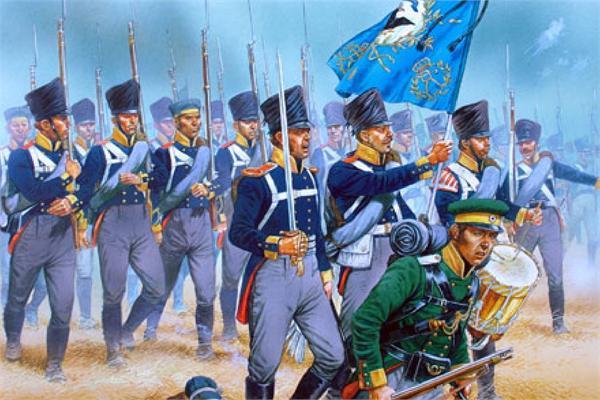My odd last name, “Wunker,” comes from the medieval German word for “flag-waver.” We were the idiots in the army carrying just a flag. Miraculously, someone survived to become my ancestor. And that is why this story, from my new book AI and the Octopus Organization, is especially meaningful to me:
Until the mid-nineteenth century, Europe’s armies consisted of heavily drilled regiments that stood shoulder to shoulder and fought in tightly coordinated formations. Each regiment wore distinctly colored uniforms and carried large banners—not just for show, but to make it easier for senior officers to distinguish them from one another. Surveying the battlefield from a safe distance, those officers gave orders to a retinue of couriers who raced in and out of the action on horseback. Of course, the situation on the ground frequently changed by the time the couriers delivered their commands (if they even managed to get to the front lines), and the regiments were almost impossible to “steer.” Once the soldiers started moving in one direction, their fate was set.
This article is part of Branding Strategy Insider’s newsletter. You can sign up here to get thought pieces like this sent to your inbox.
Based on his experiences during the Napoleonic Wars, Carl von Clausewitz coined the term “fog of war,” a state of extreme uncertainty that impacted every decision and action in battle. Mitigating that uncertainty required meticulous preplanning, inflexible hierarchies, and a culture of unerring order-following, even when it meant marching toward certain death.
By the late nineteenth century, a completely new philosophy of army organization had emerged. Telegraphs and railways created new possibilities for coordinated mobility, collapsing the time that officers previously had to plan and execute strategy. In response, Prussian generals increasingly relied on an organizational philosophy called Auftragstaktik, or “mission tactics.” Commanders would set objectives and then empower field officers and their units to decide how they should be achieved. This increased real-time adaptability, allowing armies to function more like groups of semi-autonomous cells rather than large, rigid formations.
The Prussian army effectively restructured its “nervous system” to be more distributed so it could sense and act closer to the action. AI enables your organization to achieve the same goal.
As a marketer, your job is to compete. Compete differently with The Blake Project.
Marketing departments are typically headed by people who once excelled in the lower ranks, and that means that these people often micro-manage the work of staff now reporting to them. AI presents an opportunity to change this model.
Like the Prussian army, marketing “commanders” can set objectives and allow their staff to execute rapidly using AI tools. Individual contributors can draft ad copy in partnership with AI, test it with synthesized users representing the target audience, and rapidly digest reports on how distinct executions are performing on platforms like Connected TV that provide highly granular data. With AI, they can speedily construct media buying plans, provide self-service tools for field offices to communicate, and scan social media posts for compliance with brand guidelines.
AI enables the frontline to act fast, without detailed human instruction, because – done right – it provides a thought and execution partner grounded in a company’s best practices.
The generals don’t need to courier their instructions into the battle. AI ensures that frontline marketing troops have the necessary knowledge, the ability to execute quickly, and the guidelines to ensure that their execution aligns with the higher-ups’ intent. You may not be able to pronounce Auftragstaktik, but you can practice it.
Contributed to Branding Strategy Insider by Steve Wunker, Co-Author of AI and the Octopus Organization:
The Blake Project Can Help You Create A Brighter Competitive Future In The Jobs To Be Done Workshop
Branding Strategy Insider is a service of The Blake Project: A strategic brand consultancy specializing in Brand Research, Brand Strategy, Brand Growth and Brand Education
FREE Publications And Resources For Marketers
Post Views: 0








